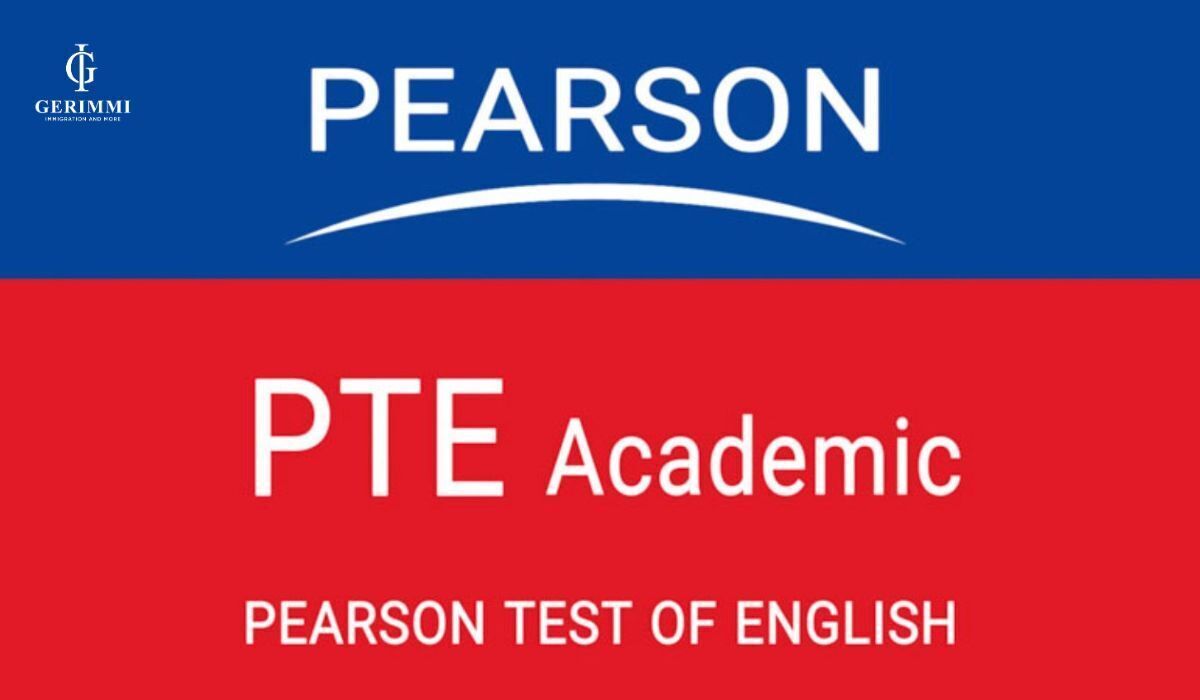Vocational study in Australia is increasingly becoming an ideal choice for Vietnamese students thanks to its reasonable costs, practical training programs and high employment opportunities. However, to obtain a 407 visa for vocational study, you need to understand the latest updated conditions in 2025, from educational requirements, English, GTE to changes in visa quota.
I. Introduction to studying vocational training in Australia VET (Vocational Education and Training)
System VET (Vocational Education and Training)in Australia is an attractive option for those who want to study with practice and clear career orientation. Not only does it help students shorten their study time,vocational study in Australia also opens up opportunities work in Australia after graduation, even skilled immigration if eligible
This form of vocational training is mainly provided by TAFE (Technical and Further Education) colleges and registered private vocational training organisations (RTOs).
1. Reasons to choose vocational study in Australia
- Short study time, significant cost savings:
Most vocational training programs in Australia last from 6 months to 2 years, suitable for those who want to quickly gain skills to work. Compared to university programs, vocational training helps save significantly on tuition fees and living expenses, especially suitable for students with limited budgets.
- Practical training program, close to recruitment needs:
VET courses focus on practical skills, simulating real-world work, giving students experience while still in school. This increases the likelihood of gaining employment after graduation, a distinct advantage over academic programs.
- High employment and settlement opportunities in industries with labor shortages:
Many VET occupations such as chefs, welders, nurses, technicians, etc. are on Australia’s priority settlement list (MLTSSL). Graduates have the opportunity to apply for skilled visas such as 482, 491, 190 to stay and work and settle permanently.
- Clear learning path, easy transfer to university:
With a foundation from VET courses, students can continue their studies at bachelor's level at partner universities. This helps save on university costs and improves future career opportunities.

2. How is vocational study different from university in Australia?
|
Criteria |
Vocational Education and Training (VET) |
University |
|
Training time |
6 months - 2 years |
3 - 4 years |
|
Application |
High, lots of practice |
Theory and research are the main |
|
Tuition |
Lower |
Higher |
|
Input |
Easier (lower IELTS requirements) |
Higher requirements |
|
Settlement opportunities |
Many occupations are on the SOL list |
Depends on the field of study |
|
Early employment opportunities |
Higher due to hands-on program |
Usually after graduation |
II. Vocational training levels in the Australian VET system
1. Certificate I - IV
- Certificate I - The most basic knowledge base
This is the first level of study in the Australian vocational training system, providing students with the introductory skills and basic knowledge to become familiar with their chosen career field. Usually suitable for those who have no work experience and have just graduated from high school.
- Certificate II - Building Initial Career Skills
This level helps students gain a stronger foundation to enter real-world jobs. At this stage, learners begin to practice in simulated or real-world environments, supporting clearer career orientation.
- Certificate III - Standardization of work qualifications
This is the most common level for international students studying vocational training in Australia. Most professions such as cookery, hairdressing, nursing, construction… require at least this level to apply for employment or settlement. Certificate III is an important condition to continue to study Diploma or apply for a 407 visa.
- Certificate IV - Advanced skills and supervisory roles
Graduates of this qualification can progress to more senior technical roles or start working as a small team manager. The Certificate IV also provides a pathway to a Diploma in the Australian vocational education and training system.

2. Diploma and Advanced Diploma
- Diploma - Deeply learn about your major, ready to work
Diploma programs last from 12 - 18 months and provide in-depth knowledge in areas such as restaurants - hotels, engineering, IT, public health... This is the ideal choice if you want to quickly become skilled and ready to work in Australia.
- Advanced Diploma - Advanced level before university
Students who complete the Advanced Diploma can take on senior professional or supervisory positions and receive partial credit exemptions if they wish to progress to a bachelor degree at an Australian university. This is a popular choice for international students who want to further their studies while still saving money.
3. Ability to transfer to university or settle down
One of the strengths of the VET system is its flexible connectivity. After completing programs such as Diploma or Advanced Diploma, students can transfer to year 2 or 3 of major universities in Australia such as Deakin, RMIT, Griffith, La Trobe... Depending on the field of study, you can be exempted from 8-12 university subjects, shortening the time and saving hundreds of millions of dong in tuition fees.
Australia is currently experiencing a shortage of skilled workers in areas such as chefs, technicians, electricians, nurses, aged care workers, IT workers, etc. VET graduates can apply for skilled visas such as 491 (regional), 190 (state nominated), or 482 (temporary work visa) if they meet the requirements for experience, English and vocational skills.
III. Academic requirements for vocational study in Australia
1. Minimum education level (grade 11 or 12)
To be eligible to study vocational training in Australia in 2025, international students need to complete at least Year 11 or Year 12 depending on the program and course level they register for.Programs such as Certificate III, IV and Diploma usually require applicants to have completed Year 12. However, some vocational schools in Australia still accept students who have graduated from Year 11 if they have good academic ability and a clear commitment to their study path.
2. GPA & academic records to prepare
Although not requiring a high GPA like when studying at an Australian university, most vocational schools require students to haveMinimum GPA from 6.0 - 6.5 (scale of 10)during high school years. GPA will be used to assess knowledge acquisition ability, learning attitude, and is a supporting factor for 407 visa or 500 vocational visa application.
Required academic records include:
- High school diploma (or certificate of 12th grade enrollment)
- Full high school transcripts for all years
- Additional study certificates if any (IT, vocational skills, foreign languages)
Presenting clear, coherent academic records with notarized translations helps increase the rate of quick approval from the school and the Australian Immigration Department.
3. Specific requirements of each vocational school or state
Depending on the state and vocational training institution in Australia, entry requirements may vary. For example,vocational schools inNew South Wales or Victoria may require applicants to have completed grade 12 and achieved good academic performance or above.Some TAFE schools in regional states such asSouth Australia, Tasmania, hoặc Western Australiacan be more flexible in admission, especially for industries that are lacking human resources.
In addition, some vocational courses are related to the field.health, technology or child educationAdditional requirements may be required:
- First Aid Certificate
- Health certificate
- Criminal record
- Work experience (minimum 6 months - 1 year)

IV. English requirements for vocational study in Australia
1. Minimum IELTS 5.5 or PTE 42
To apply for vocational training in Australia, most courses require international students to have an IELTS score of 5.5 or higher (with no skill below 5.0) or a PTE Academic score of 42. This is a common benchmark for programs such as Certificate III, IV and Diploma.
Some specialized professions (especially in the fields of care, health, engineering) may require IELTS 6.0 - 6.5 to ensure language proficiency during study and professional practice.If you are applying for a 407 or 500 visa, an English language certificate will be required for the Immigration Department to assess your academic ability and integration potential.
2. Recognized alternative English language qualifications
In addition to IELTS and PTE, a number of other international English certificates are also recognized by Australian vocational schools and visa agencies:
- TOEFL iBT: From 46 points or more
- Cambridge English: B2 First (FCE)from 162 and up
- Occupational English Test (OET): Often used in the medical industry
- Duolingo English Test (DET): Accepted at some private vocational schools
However, if your goal is to apply for a 407 visa or a skilled visa,IELTS or PTE is still the safest choiceto be widely recognized and easily transferable scores.
3. Is English required if I do an ELICOS course first?
If you do not have enough IELTS 5.5 or PTE 42 score, you can still study vocational training in Australia by registering for an ELICOS (English Language Intensive Course for Overseas Students) course in Australia before entering the main vocational course.This form is often referred to as vocational study in Australia without IELTS entry, because the school will issue a conditional letter of invitation (CoE) for both English and vocational courses.
Once you complete ELICOS and reach the required level, you will be transferred to mainstream studies.However, you still need a certain English score (e.g. IELTS 4.5 or above) to apply for a 407 visa. The duration of ELICOS study can be from 10 to 30 weeks depending on your current score.

V. Conditions for applying for an Australian vocational study visa (Visa 407 – VET)
1. CoE, OSHC and course level requirements
To be eligible to apply for a VET visa (subclass 407), you will need a Confirmation of Enrolment (CoE) issued by a CRICOS-registered vocational training institution. In addition, compulsory health insurance (OSHC) must be purchased before you apply for a visa.
The right course level is important: you need to enrol in the correct Certificate III, Certificate IV, Diploma or Advanced Diploma, or an English language pathway programme (ELICOS) if you don't have the required IELTS or PTE score.
2. GTE (Genuine Temporary Entrant) requirements
The GTE section plays a key role in the VET visa application. You must write a personal statement (in English) clearly stating the reason for studying in Australia instead of Vietnam, your career goals after completing the course and your commitment to return to Vietnam. A convincing GTE is one of the factors that determines a higher visa approval rate because it proves that you are a genuine student and do not intend to stay illegally.
3. Regulations on overtime work and visa duration
Visa 407 allows international students to work up to 48 hours/week during the semester, and full-time during the holidays. The duration of the Australian vocational student visa will be based on the duration of the course registered on the CoE, plus a maximum of 3-6 months depending on the policy. After completing the VET program, you can continue to apply for another visa such as a skilled visa (Subclass 482, 491, 190).
4. New notes on quotas and visa tightening in 2025
From 2025, the Australian government will implement the National Planning Level to limit the number of national student visas, prioritizing academic pathways and reducing the number of VET visas issued. At the same time, the policy of tightening GTE and dealing with “ghost colleges” that do not meet standards and do not provide real training will make Australian vocational student visa applications more transparent and carefully screened.
.jpg)
VI. Health & criminal record requirements
1. Mandatory health examination for visa 407
Students applying for a 407 visa are required to undergo a medical examination at a designated facility before submitting their application. The results include a chest X-ray, HIV test, general check-up... to ensure you are physically fit to live and study in Australia. The sooner you undergo a medical examination, the faster your application will be processed.
2. Criminal records in Vietnam and Australia
You need to submit a notarized Vietnamese Police Check No. 2 translated into English. Some cases require an additional Australian Police Check if you have been in Australia for more than 12 months. This document is to ensure that you have no criminal record and meet the Australian visa application criteria.
VII. Update on Australian vocational study abroad policy 2025
1. National Planning Level
The National Planning Level for 2025 sets a cap on the total number of student visas granted to each country. If applications from Vietnam exceed the threshold, Australian VET visas may be prioritised after university visas. Therefore, students should apply early and prepare well to avoid being refused due to exceeding the quota.
2. Tighten GTE testing and limit "ghost schools"
In 2025, the Australian Department of Immigration tightened GTE conditions and thoroughly checked with training organizations (RTO/TAFE) to eliminate "ghost schools" that issued fake CoEs or did not provide real training. This places higher requirements on Australian vocational study applications: need to clearly verify CoE, Training Plan and GTE information.
3. List of priority settlement industries for VET
Some of the occupations listed in the Skilled Occupation List are creating great opportunities for VET students who want to settle in Australia. Notable ones are: nursing, mechanical engineering, electricians, aged care, etc. Graduates of these occupations have many opportunities to apply for skilled visas such as 190, 491 or 482 if they meet the English score, experience and nomination from the state or regional government.

Conclusion
Understanding the conditions for studying vocational training in Australia in 2025 is an important first step for you to plan your studies and apply for a visa accurately. With changes from GTE policy, national visa limits to practical training requirements, international students need to prepare more carefully than ever.

